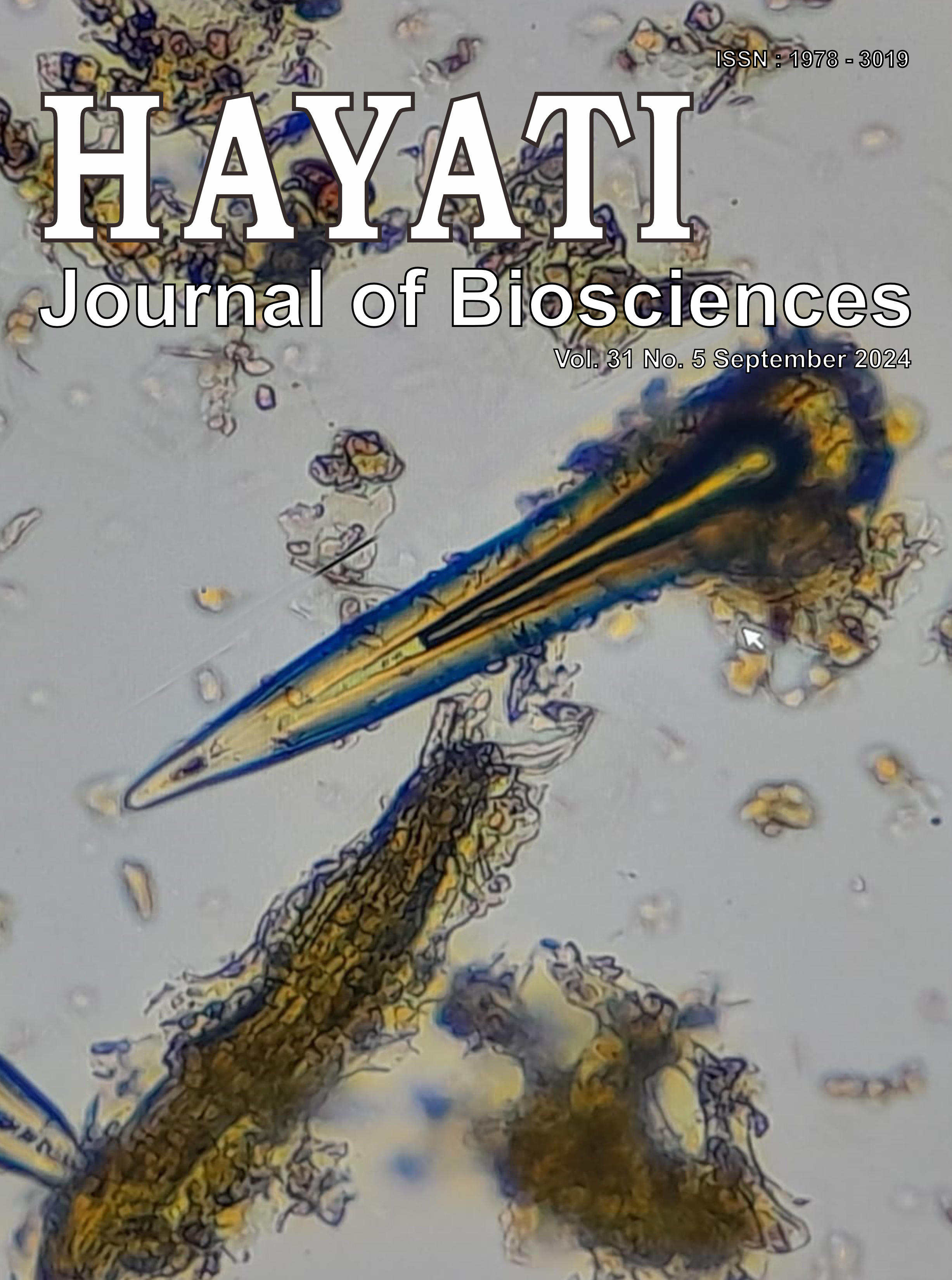Expression of Immunoglobulin M (IgM) and Immunoglobulin G (IgG) in Normal Wistar Rat Post-Cheral® Administration
Abstract
Maintaining immunoglobulin levels in the body is important to protect the body from exposure to pathogens. One effort can be made by consuming herbs containing immunomodulatory compounds, such as Cheral®, which includes a combination of herbs Phyllanthus niruri and Curcuma longa. This research aims to determine the expression of immunoglobulin M (IgM) and immunoglobulin G (IgG) following the administration of Cheral® to Wistar rats. The study was conducted in vivo, utilizing 24 healthy male Wistar rats for a 90-day treatment period. The research was divided into four treatment groups, including a control group and three dosage groups: Dose 1 (156.25 mg/kg BW), Dose 2 (312.5 mg/kg BW), and Dose 3 (468.75 mg/kg BW). IgM and IgG were isolated from the spleen and analyzed using flow cytometry. Flow cytometry data were analyzed using SPSS with a one-way ANOVA and post hoc test (p-value <0.05). The analysis showed that the relative number of IgM-producing cells in the control group was significantly higher than in the treatment groups, with a difference of 44.40%. In contrast, the relative number of IgG-producing cells in Dose 3 was significantly lower than all other treatment groups, showing a decrease of 29.21%. Overall, the expression of IgG and IgM did not differ substantially across all treatments. The lower IgG and IgM profiles compared to the control group indicate Cheral®'s ability to prevent infections and maintain the immune system of the rats throughout the treatment period.
Downloads
Copyright (c) 2024 Firda Nuri Asyhari, Heni Sukma Zulfatim, Nenis Try Melani Putri, Moh Dliyauddin, Ahmad Shobrun Jamil, Aris Soewondo, Muhammad Halim Natsir, Mansur Ibrahim, Sri Rahayu, Muhammad Sasmito Djati, Muhaimin Rifa’i

This work is licensed under a Creative Commons Attribution-NonCommercial 4.0 International License.
HAYATI J Biosci is an open access journal and the article's license is CC-BY-NC. This license lets others distribute, remix, tweak, and build upon author's work, as long as they credit the original creation. Authors retain copyright and grant the journal/publisher non exclusive publishing rights with the work simultaneously licensed under a https://creativecommons.org/

























.png) IPB University
IPB University Department of Biology
Department of Biology The Indonesian Biological Society
The Indonesian Biological Society 

